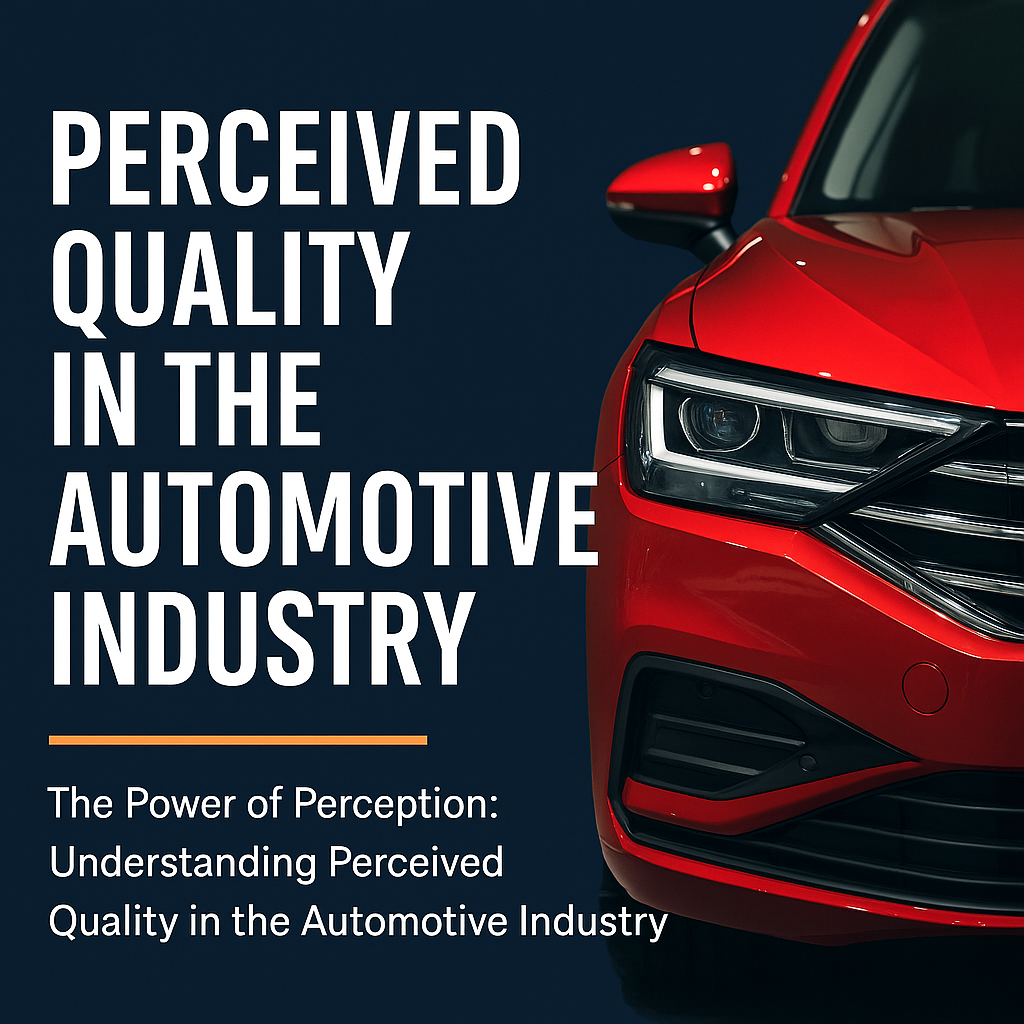In today’s hyper-competitive automotive market, building a mechanically sound vehicle is no longer enough. Consumers don’t just buy a car—they buy how it makes them feel. This is where the concept of perceived quality comes into play. It’s the invisible currency that brands use to win hearts, build loyalty, and justify premium pricing.
But what exactly is perceived quality, and why does it matter so much in the car business? Let’s take a deep dive.
What Is Perceived Quality?
Perceived quality refers to a customer’s subjective impression of how premium, well-made, or reliable a car appears to be—based on what they see, touch, hear, and interact with.
It’s not about how the vehicle actually performs over time (which is “objective quality”), but rather how high-quality it feels, even before the engine is turned on.
Why Does Perceived Quality Matter?
Consumers form lasting opinions in the first few seconds of seeing or experiencing a product. In the showroom, during a walkaround video, or while closing a door—these moments define whether a buyer considers a car “cheap” or “premium.”
Here’s why it’s so important:
- First impressions drive buying decisions
- Higher perceived quality allows for premium pricing
- It builds brand equity and customer trust
- It fuels positive word-of-mouth and reviews
- It boosts loyalty and repurchase intent
In essence, perceived quality influences sales more than actual technical specs in many segments—especially in lifestyle-oriented markets.
Components of Perceived Quality in Cars
Here’s a detailed breakdown of the elements that shape perceived quality:
1. Exterior Perception
- Paint finish: Rich, deep gloss and uniform texture = premium feel.
- Panel gaps & flushness: Tight, consistent shutlines signal precision and attention to detail.
- Lighting design: Sleek LED DRLs and signature tail lamps elevate the perceived class.
- Closure feel: A door that closes with a confident “thunk” feels more expensive.
2. Interior Quality
- Material selection: Soft-touch plastics, leather inserts, and satin-finished metals enhance tactile satisfaction.
- Dashboard texture & layout: Clean lines and symmetry convey luxury.
- Switchgear feel: Buttons and knobs with tactile feedback communicate refinement.
- Seat design: Stitching quality, bolstering, and upholstery contribute heavily to perception.
3. Sound Quality (NVH)
- Cabin quietness: A refined, noise-insulated interior is perceived as more premium.
- Startup and shutdown sounds: A smooth engine ignition or digital chime adds class.
- Indicator & alert sounds: The auditory signature plays a major role in modern perceived quality.
4. Tactile Feedback (Haptics)
- Steering feel: Premium cars have grips that feel solid and responsive.
- Gear lever: Smooth slotting and short throws feel more expensive.
- Touchscreens: Responsive, smooth, and bright displays reflect higher perceived tech quality.
5. Functional Interactions
- Ease of use: Are controls intuitive and accessible? Premium brands prioritize ergonomic experience.
- Smooth operation: Glove box, sunroof, and tailgate movements all count.
- Technology UX: Infotainment UI should be smooth, logical, and aesthetically pleasing.
6. Brand Cues & Design Language
- Logo and badging quality
- Signature DRLs or LED patterns
- Chrome accents and brushed metal trims
- Design consistency across models
How Automakers Engineer Perceived Quality
Brands invest millions into perceived quality development, often with dedicated teams and research labs. Here’s how they do it:
- Perceived Quality Audits (PQA): Cars are rated on visual, tactile, and auditory cues using internal scorecards.
- Material and finish benchmarking: Comparing rivals and segment leaders.
- Consumer clinics: Real-world buyer impressions of prototypes and mock-ups.
- Shutline analysis and gap tolerances: Even millimeter differences affect perception.
- NVH simulations and tuning: Engineers design the exact sound of a door closing!
Cultural Differences in Perceived Quality
What’s considered premium in one market may not be in another:
- In India, chrome accents often signal luxury.
- In Germany, clean matte finishes and minimalism convey premium appeal.
- In Japan, whisper-quiet cabins and reliability dominate perception.
This means automakers must tailor perceived quality to regional preferences without compromising brand identity.
Real-World Examples
| Brand | Objective Reliability | Perceived Quality |
| Toyota | Very High | High |
| Skoda | Moderate | Very High |
| Tata Motors | Improving | Moderate |
| Hyundai | Good | High |
| Mercedes-Benz | Average (recent years) | Very High |
Take Skoda, for instance. While it may not be the most reliable brand mechanically, its use of solid materials, rich interiors, and tight build quality gives it a high perceived value.
Quality Is What You Feel
At the end of the day, cars are emotional purchases. When a customer steps into a car, they’re not evaluating torque curves or chassis flex. They’re evaluating how it feels, looks, and sounds—and whether it reflects their identity.
Perceived quality bridges the gap between engineering and emotion. It’s not a luxury—it’s a necessity in today’s market.
As the saying goes in the automotive world:
“The customer doesn’t see the engine. They see the experience.”

